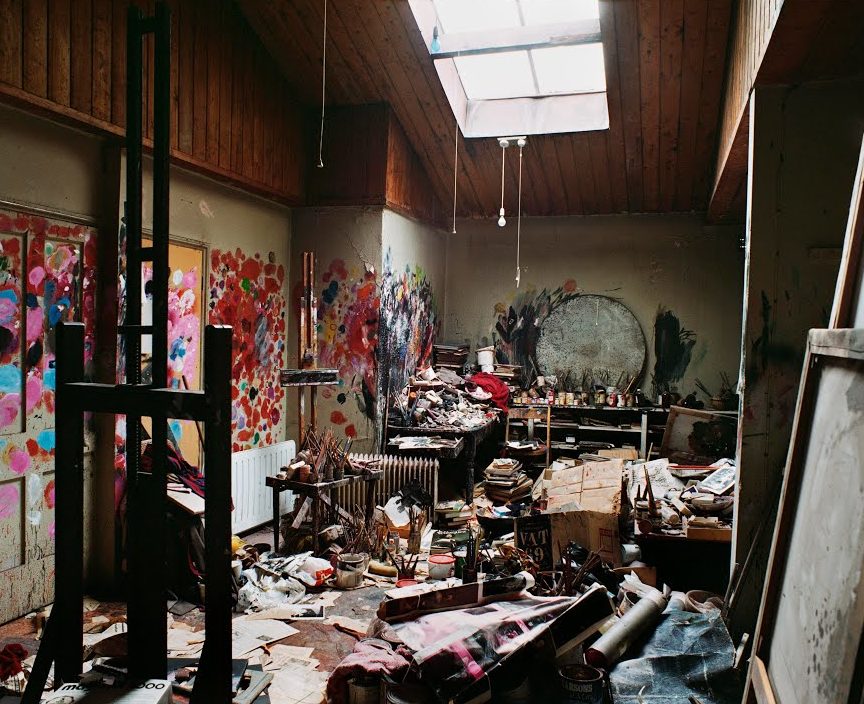- Culture
- 22 Feb 24
Francis Bacon's portrait of lover and muse George Dyer to sell at auction

Francis Bacon’s Three Studies for a Portrait of George Dyer will be auctioned by Sotheby’s as part of its modern and contemporary art sale.
One of the most intimate and emotionally charged works of Irish painter Francis Bacon’s oeuvre, Three Studies for a Portrait of George Dyer, is being auctioned by Sotheby’s as part of its modern and contemporary art sale, The Guardian reports.
Bacon’s Study is a triptych comprising three portraits of his lover and muse, George Dyer. Painted between 1964 and 1970, the artist thought the painting so significant that he personally selected it to appear at his first major retrospective at Paris’ Grand Palais in 1971.
What should have been a monumental, jubilant occasion celebrating the Irish painter’s outstanding career was blighted by tragedy when two days before the opening, Dyer died from an overdose of sleeping pills in the couple’s hotel room.
Three Studies for George Dyer is expected to sell for anywhere between £5 million and £7 million when it goes under the hammer next month. The painting was first acquired by the current owner from London’s Marlborough Gallery in 1970, when the painting was completed, and has been available for public viewing just twice since then — initially at the Grand Palais and later at an exhibition at the Marlborough in 1993.
Bacon was 54 when he met 29-year-old Dyer in autumn 1963. Some say that Dyer had broken into the artist’s house. But according to Bacon, the pair initially met in a Soho drinking den when a confident Dyer introduced himself to Bacon and his entourage with the gambit: “You all seem to be having a good time. Can I buy you a drink?”
As such love stories go, sparks flew and from there, Dyer and Bacon were inseparable, though their relationship soon became marked by drama and tension.
Such drama and tension are apparent in the Bacon's portraits of his lover. The artist drew on photographs of Dyer captured by John Deakin in 1964 – which were later found ripped, torn and paint splattered among the debris in the painter’s studio – to create the heavily distorted portraits using his unique visual vocabulary. The gestural swaths of thick colour are framed by a dramatic background of dense black to illustrate Bacon’s warped, torqued and scraped handling of paint, creating a portrayal which encompasses the full range of his and Dyer’s turbulent and ardent relationship.
At the time, the Grand Palais retrospective was shaping up to be the single most significant exhibition of Bacon’s career. It was the first time, since Picasso, that a living artist had been granted a solo show at the venue. Bacon continued with the opening, despite suffering unfathomable shock and grief over the tragic loss of his partner.
“George Dyer was undoubtedly Francis Bacon’s greatest love,” said Sotheby’s senior director of contemporary art, Tom Eddison. “A chance encounter soon evolved into something that could really only be described as a tempestuous and passionate love affair, with Dyer quickly inhabiting a position of paramount importance across the grand theatre of Bacon’s life and work.”
Eddison highlighted that Dyer’s appearance in Bacon’s paintings nearly 40 times over “truly shows the emotional force that he had over Bacon, so clearly evident in this intimate, highly charged portrayal.”
Born in Dublin in 1909, Francis Bacon and his family moved between Ireland and England several times, leading to a sense of displacement which remained with the artist throughout his life. His family settled in Gloucestershire shortly after the establishment of the Irish Free State. Bacon was drawn to painting after being inspired by several visits to art galleries while living between Berlin and Paris in 1926.
Two years later, Bacon returned to London to work as an interior designer, a practical job to supplement his artistic desires. His first painting to attract public attention was his 1933 Crucifixion. Obsessed with human anatomy and form, religion, raw portraits and thematic brutalism, Bacon established his singular style and grew a career over nearly six decades to become one of the most influential artists of the 20th century. He died in 1992, aged 82.
 Francis Bacon’s studio. Credit: Hugh Lane Gallery
Francis Bacon’s studio. Credit: Hugh Lane GalleryIn 1988, Bacon’s sole heir John Edwards and executor Brian Clarke donated the contents of the artist’s studio to be relocated from London to Dublin’s Hugh Lane Gallery; the studio had remained largely untouched since Bacon's death. Planning to keep it that way, a conservation team mapped and catalogued every item in the studio into a comprehensive database, it became the first computerised record of the entire contents of an artist's studio. At the Hugh Lane in 2001, the relocated replica of Bacon's studio opened to the public and is still on view today.
RELATED

- Culture
- 30 Jul 25
Hugh Lane Gallery to close for "at least three years" for refurbishment

- Culture
- 21 Jul 25








